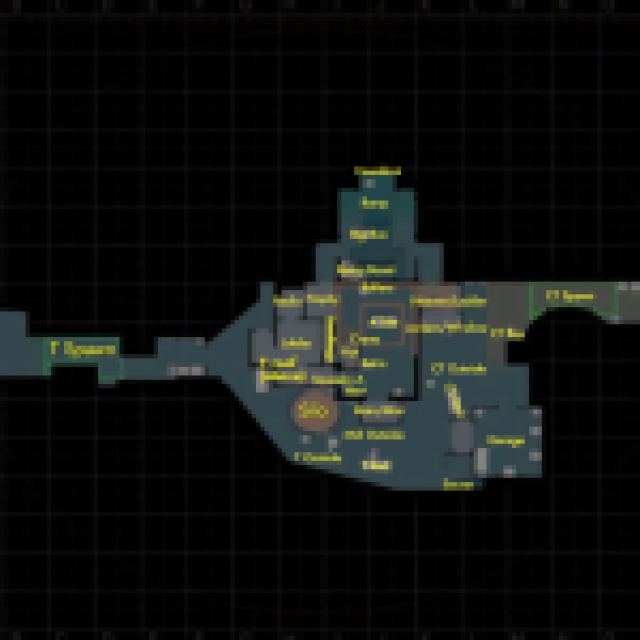Nuke is a seemingly tiny and compact CS2 map, but do not let that fool you. It is very detailed, and because it’s all boxed up, many new players need clarification with the multiple levels you can be on when you play Nuke in Counter-Strike 2. If you are new to Nuke, I will gladly guide you through each position, landmark, and callout so that you can get accustomed to the map as soon as possible.
Every Nuke Landmark in CS2 – Nuke Callouts Listed
Given that Nuke has two layers on the radar, one being above the ground level and the other being underground, this time, we will have two pictures in our article. Some locations’ names might need to be clearer based on their name, and when you find such obscurity, know that it’s a keepsake from CSGO, CSS, and CS 1.6 as the community couldn’t be bothered to change the name of the callout.
For example, Radio had an actual radio and a lightbulb you could hop onto. The secret entrance was on the upper side of the Garage, and many players didn’t even spot it. I already see that A site might be complicated, so let’s go through the stuff that’s there:
- Rafters are the ledge you can walk on when you exit Heaven
- Crane is the “bridge” in the middle of the ceiling in A
- Hut is the container box through which a site entry is possible, and it’s also worth noting that “Hut Roof” is also a callout.
- Tetris are the boxes next to the hut that resemble a Tetris block-like formation.



General Starter Tips for Nuke in CS2
- The map is complex; take time in practice mode to learn it inside and out (literally).
- Rotations on this map seem harder than on the other maps, and usually, this is the case.
- Communication between you and your teammates should be at a high level. Knowing if action is taking place on A or B can mean a difference between losing and winning rounds because the radar is confusing due to the multiple layers of the map.
- Key points of conflict are between these positions:
- (CT) Ramp and (T) Trophy
- (CT) Heaven, Mini/Main, and (T) Squeaky, Vents and Hut
- (CT) Outside, Secret, Garage, and (T) Silo and Outside.
- CTs will usually (on average) have their defenses sorted out like this:
- 1 in Heaven
- 1 in Main/Mini (possible to rotate to Outside)
- 1 in Garage/Secret to be a dedicated guard for Outside
- 2 on Ramp (one around Headshot, and one between Ramp and Heaven ladders, because rotation is possible to Heaven, Outside and Locker.
- Learn the difference between the bomb tick sounds on Nuke. The bomb planted on A will always have a higher-pitched beep, and the bomb that is planted on B will always have a lower-pitched, deeper-sounding beep. This sounds mind-shattering to some of you who have just read the previous sentence because nobody cared about this feature on Nuke. However, here, it can help you tell where the bomb is if you listen for beeps through the walls.
- Watch professional matches on the map. Not kidding. That’s how we learned when I was younger, by watching demos. Nowadays, there are YouTube replays and many great resources.
Enough of Nuke for today. Make sure to check out the smokes guide linked above, and if you are new to CS2, take a look at 8 tips for new CS2 players coming from CSGO.





Published: Oct 18, 2023 11:07 am